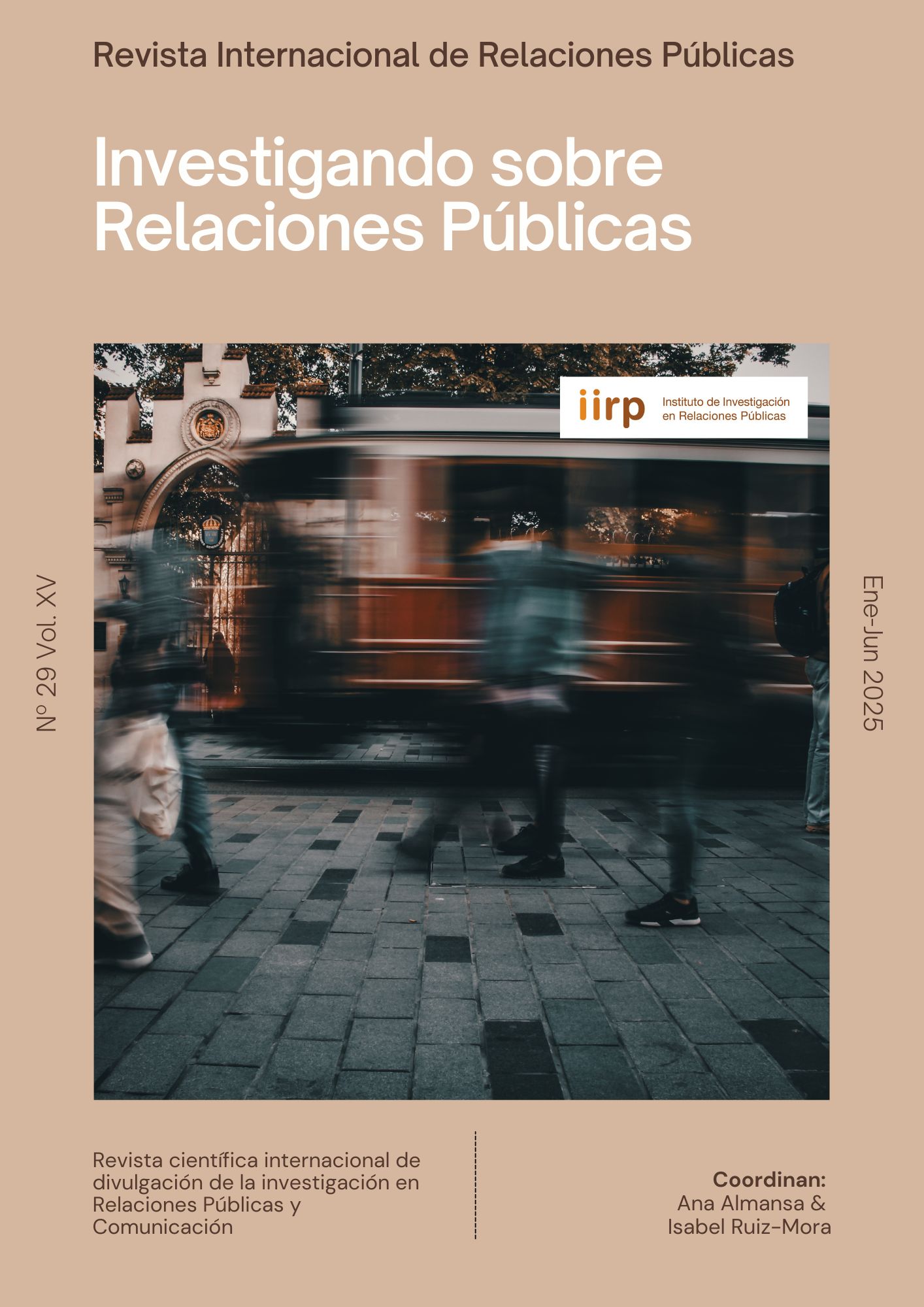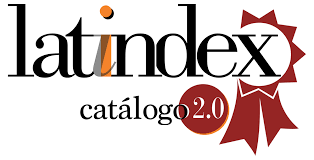Beyond like, share, and comment: Cape Verde Armed Forces performance on Facebook
DOI:
https://doi.org/10.5783/revrrpp.v15i29.902Keywords:
Armed Forces,, Cape Verde, Social Media, Public Relations, PerformanceAbstract
This article examines the communicative strategies used by the Armed Forces of Cape Verde (FACV) on their official Facebook page, aiming to understand their impact on public opinion and the construction of institutional legitimacy. A mixed-methods approach was employed, analyzing 129 posts published between April and October 2023, through a combination of quantitative interaction analysis (13,000 reactions and 3,000 comments) and thematic qualitative content analysis. The results show that posts related to tragic events generate higher levels of interaction, while recruitment and institutional communication content elicit more moderate responses. The study's findings highlight the need for strategic management of institutional social media, with emphasis on editorial planning and aligning content with the institution’s communication goals.
Downloads
References
Adam, M., Wessel, M. & Benlian, A. (2020). AI-based chatbots in customer service and their effects on user compliance, Electronic Markets, 31,427-445. https://doi.org/10.1007/s12525-020-00414-7
Archer, C. (2019). Social media influencers, post-feminism and neoliberalism: How mum Bloggers ‘playbour’ is reshaping public relations. Public Relations Inquiry, 8(2), 149–166. https://doi.org/10.1177/2046147X19846530
Avidar, R. & Roth-Cohen, O. (2023). Social media theory in public relations: A curation of a neglected topic in public relations research. Public Relations Review, 49(5), 102386. https://doi.org/10.1016/j.pubrev.2022.102154
Bardin, L. (1977). Análise de conteúdo. Edições70.
Barros, A. (2020). A Evolução dos Sites de Redes Sociais: uma análise do Facebook. Novatec.
Boatwright, B. & Pyle, A. (2023). “Don’t Mess with Ukrainian Farmers”: An examination of Ukraine and Kyiv’s official Twitter accounts as crisis communication, public diplomacy, and nation building during Russian invasion. Public Relations Review, 49(3), 102338. https://doi.org/10.1016/j.pubrev.2023.102338
Bortree, D.S. & Seltzer, T. (2015). Dialogic Strategies in Social Media: A Study of Nonprofit Organizations' Use of Facebook. Public Relations Journal, 9(2), 1-22.
Boyd, D. & Ellison, N. (2007). Social Network Sites: Definition, History, and Scholarship. Journal of Computer Mediated Communication, 13, 210-230. https://doi:10.1111/j.1083-6101.2007.00393.x
Busquet, J. & Medina-Cambrón, A. (2017). La investigación en comunicación: ¿qué debemos saber? ¿qué pasos debemos seguir? Editorial UOC.
Cabrero, J. & Cabrero, M. (2001). O livro de Ouro das Relações Públicas. Porto Editora.
Capra, F. (2008). Apresentação. In F. Duarte, C. Squant & Q. Souza. O tempo das redes (pp.13-16). Perspectiva.
Castells, M. (2003). A galáxia da Internet: reflexões sobre a internet, os negócios e a sociedade. Jorge Zahar.
Cho, M., Schweickart, T. & Haase, A. (2014). Public engagement with nonprofit organizations on Facebook. Public Relations Review, 40(3), 565-567. http://dx.doi.org/10.1016/j.pubrev.2014.01.008
Coombs, W.T. & Holladay, S.J. (2015). Public relations’ “Relation Identity” in research: Enlightenment or illusion. Public Relations Review, 41(5), 689-695. https://doi.org/10.1016/j.pubrev.2013.12.008
Data Report (2024). Digital 2024 Cabo Verde. In Digital 2024 Global Overview Report, https://datareportal.com/reports/digital-2024-cabo-verde?rq=Cabo%20Verde
Doh, H., Kang, J. & Jo, S. (2024). Empathy in public relations practice of South Korea. Public Relations Review, 50(5), 102506. https://doi.org/10.1016/j.pubrev.2024.102506
Eaton, L. (2007). Army’s Accession Command in an interview with ABC News. “Army’s newest Recruiting Tool: YouTube”.
http://abclocal.go.com/wtvd/story?section=news/national_world&id=5154815
Fearn-Banks, K. (2017). Crisis Communication: a casebook approach. Routledge.
Fernandes, G. (2002). A dilução da África: Uma interpretação da saga identitaria caboverdiana no panorama politico (pós)colonial. Editora de UFSC.
Gil, A.C. (2018). Como Elaborar Projetos de Pesquisa. Editora Atlas S.A.
Grunig, J. & Hunt, G. (1984). Managing Public Relations. Holt, Rinehart & Winston.
Grunig, J. & Hunt, G. (1992). Excellence in Public Relations and Communication Management. Routledge. https://doi.org/10.4324/9780203812303
Groulx, E.J.G. (2015). Use of Social Media in the Canadian Armed Forces Primay Reserves- Facebook- “Friend or Foe?”. Master dissertation, Canadian Forces College, Canada. https://www.cfc.forces.gc.ca/259/290/296/286/groulx.pdf
Holmgreen, L-L. (2024). “We’re not proud of the cases we’ve been involved in”: Crisis resolution on Facebook using conversational human voice. International Journal of Business Communication, 62(1), 70-91. https://doi.org/10.1177/23294884231200861
Huang, M. & Ki, E-J. (2023). Protecting organizational reputation during a para-crisis: The effectiveness of conversational human voice on social media and the roles of construal lever, social presence and organizational listening. Public Relations Review, 49(3), 102389. https://doi.org/10.1016/j.pubrev.2023.102389
Hyman, H. (1971). Diseño y análisis de encuestas sociales. Amorrurtu Editores.
Jayakumar, M., Soundarraj, P.I., Priya, V.P.M., Gupta, R., Abbas, J. & Naser, S.J. (2024). Utilizing Artificial Intelligence-Powered Chatbots for Enhanced Customer Support in Online Retail. 2024 Ninth International Conference on Science Technology Engineering and Mathematics (INCONSTEM): 1-6.
Jenkins, H. (2006). Convergence culture. New York University Press.
Kelleher, T. (2009). Conversational voice, communicated commitment, and public relations outcomes in interactive online communications. Journal of Communication, 59(1), 172-188. https://doi.org/10.1111/j.1083-6101.2006.00019
Kent, M. & Taylor, M. (2002). Toward a dialogic theory of public relations. Public Relations Review, 28(1), 21-37. https://doi.org/10.1016/S0363-8111(02)00108-X
Kent, M. (2010). Directions in social media for professionals and scholars. The Sage handbook of public relations, 2, 643–656.
Kent, M.L. & Li, C. (2020). Toward a normative social media theory for public relations. Public Relations Review, 46(1), 101857. https://doi.org/10.1016/j.pubrev.2019.101857
Kim, C. & Yang, S-U. (2017). Like, comment, and share on Facebook: How each behavior differs from the other. Public Relations Review, 43(2), 441-449. http://dx.doi.org/10.1016/j.pubrev.2017.02.006
Kim, S. & Park, H. (2023). The impact of social media communication on public trust in organizations: A case study of government agencies. International Journal of Public Administration, 46(5),453-465. https://doi.org/10.1080/01900692.2023.2171548
Krippendorff, K. (2004). Content analysis: an introduction to its methodology. London: Sage.
Lawson, S. (2014). The US military's social media civil war: technology as antagonism in discourses of information-age conflicts. Cambridge Review of International Affairs, 27(2),226-245. https://doi.org/10.1080/09557571.2012.734787
Lee, H. & Alhabash, S. (2025). The role of social media influencers in nation branding and relationship building with foreign audiences. Public Relations Review, 51(2), 102570. https://doi.org/10.1016/j.pubrev.2025.102570
Lobban, R.A. (2018). Cape Verde: Crioulo colony to independent nation. Routledge.
Lu, J., Zhang, Y., & Daugherty, T. (2021). Engagement in social media: The role of social media marketing and social media use in building relationships with customers. Journal of Marketing Theory and Practice, 29(2), 155-169. https://doi.org/10.1080/10696679.2021.1888253
Macnamara, J. & Zerfass, A. (2012). Social media communication in organizations: The challenges of balancing openness, strategy, and management. International Journal of Strategic Communication, 6(4), 287–308. https://doi.org/10.1080/1553118X.2012.711402
Macnamara, J. (2016). Organizational listening: Addressing a major gap in public relations theory and practice. Journal of Public Relations Research, 28(3-4), 146-169. https://doi.org/10.1080/1062726X.2016.1228064
Madeira, J.P. (2014). O processo de construção da identidade e do estado-nação em Cabo Verde. Revista Científica Vozes dos Vales, 6(III), 1-23.
Madeira, J.P. (2015). Nação e identidade: a singularidade de Cabo Verde. PhD Thesis, Instituto Superior de Ciencias Sociais e Políticas, Universidade de Lisboa, Portugal.
McCorkindale, T. & DiStaso, M.W. (2014). The state of social media research: Where are we now, where we were and what it means for public relations. Research Journal of the Institute for Public Relations, 1(1), 1–17. https://instituteforpr.org/state-social-media-research-now-means-public-relations/
Minayo, M.C.d.S. (2001). O desafio da pesquisa social. In M. C. S. Minayo (Org.). Pesquisa Social. Teoria, método e criatividade (pp.9-29). Vozes.
Mineiro, P. (2010). As Redes Sociais e a sua Utilização pela Força Aérea Portuguesa. (I. d. Militares, Ed.) Boletim Ensino e Investigação, 155-187.
Mislove, A.E. (2009). On Line Social Networks: Measurement, Analysis, and Applications to Distributed Information Systems. Rice University.
Morsi, S. (2023). Artificial Intelligence in Electronic Commerce: Investigating the Customers’ Acceptance of Using Chatbots. Journal of Systems and Management Sciences, 13(3), 156-176. https://doi.org/10.33168/jsms.2023.0311
Muralidharan, S., Rasmussen, L., Patterson, D. & Shin, J-H. (2011). Hope for Haiti: An analysis of Facebook and Twitter usage during the earthquake relief efforts. Public Relations Review, 37(2), 175-177. https://doi:10.1016/j.pubrev.2011.01.010
Nakara, A., Jaouen, A. & Benmoussa, F.Z. (2012). Entrepreneurship and social media marketing: Evidence from French small business. International Journal of Entrepreneurship and Small, 16(4), 386-405. https://doi.org/10.1504/IJESB.2012.047608
Neto, O.T. (2017). Métodos e técnicas de pesquisa. Argos.
Olsson, E.K., Deverell, E., Wagnsson, C. & Hellman, M. (2016). EU armed forces and social media: convergence or divergence? Defence Studies, 16(2), 97-117. https://doi.org/10.1080/14702436.2016.1155412
Paul, M.J. (2001). Interactive disaster communication on the Internet. Journalism and Mass Communication Quarterly, 78(4), 739–753. https://doi.org/10.1177/107769900107800408
Perry, C. (2010). Social Media and the Army. Militar Review, 90, 63-67. https://apps.dtic.mil/sti/tr/pdf/ADA519943.pdf
Reporters Without Borders (2024). 2024 World Press Freedom Index – Journalism under political pressure. https://rsf.org/en/2024-world-press-freedom-index-journalism-under-political-pressure?data_type=general&year=2024
Robson, P. & James, M. (2013). Not everyone’s aboard the online public relations train: The use (and non-use) of social media by public relations practitioners. PRism, 9(1), 1-18. https://www.prismjournal.org/uploads/1/2/5/6/125661607/v9-no1-a10.pdf
Santos P.M.S. C. dos (2015). Utilização das redes sociais online pelas Forcas Armadas Portuguesas enquanto instrumento de comunicação institucional. Master dissertation, Academia Militar Portuguesa, Portugal. https://comum.rcaap.pt/handle/10400.26/11367
Saxton, G.D. & Waters, R.D. (2014). What do stakeholders like on Facebook? Examining public relations reactions to nonprofit organizations’ informational, promotional, and community-building messages. Journal of Public Relations Research, 26, 280–299. https://doi.org/10.1080/1062726X.2014.908721
Seltzer, T. & Mitrook, M.A. (2007). The dialogic potential of weblogs in relationship building. Public Relations Review, 33(2), 227–229. https://doi.org/10.1016/j.pubrev.2007.02.011
Sweetser, K.D. (2010). A losing strategy: The impact of nondisclosure in social media on relationship. Journal of Public Relation Research, 22(3), 288-212. https://doi.org/10.1080/10627261003614401
Sierra Bravo, R. (1998). Técnicas de investigación social: Teoría e ejercicios. Paraninfo.
Sommerfeldt, E.J., Kent, M.L. & Taylor, M. (2012). Activist practitioner perspectives of website public relations: Why aren’t activist websites fulfilling the dialogic promise? Public Relations Review, 38(2),303–312. https://doi.org/10.1016/j.pubrev.2012.01.001
Statcounter (2025). Social media stats Cape Verde, Jan – Dec 2023. https://gs.statcounter.com/social-media-stats/all/cape-verde/2023
Statistical National Institute from Cape Verde (2021) Censo, 2021. https://ine.cv/censo-2021/
Terra, C. (2009). A comunicação organizacional em tempos de redes sociais online e de usuários-media. In Congresso Brasileiro de Ciências da Comunicação da Região, 32, Curitiba, Brazil, 4-7 september 2009. Curitiba: Intercom Sociedade Brasileira de Estudos Interdisciplinares da Comunicação. http://www.intercom.org.br/papers/nacionais/2009/resumos/R4-0495-1.pdf
Toffler, A. (1980) The third wave. Bantam Books.
Toledano, M. & Avidar, R. (2016). Public relations, ethics, and social media: A crossnational study of PR practitioners. Public Relations Review, 42(1), 161-169. https://doi.org/10.1016/j.pubrev.2015.11.012
Torres, C. (2009). A bíblia do marketing digital. Novatec.
Veil, S.R., Woods, C.L. & Hecht, R.D. (2018). The journalist as the audience: Evaluating the U.S. Navy’s “Sailor for a Day" campaign. Public Relations Review, 44(5),717-723. https://doi.org/10.1016/j.pubrev.2018.08.010
Wahab, H.A. (2023). Exploring the effect of AI Chatbots on customer experience, Satisfaction and Advocacy: New Evidence from the Banking sector in Egypt. Commerce and Finance, 43(2),116-146. https://doi.org/10.21608/caf.2023.303703
Wang, Y., Sheng, Y. & Sun, J. (2021). When public relations meets social media: A systematic review of social media related public relations research from 2006 to 2020. Public Relations Review, 47(4), 102081. https://doi.org/10.1016/j.pubrev.2021.102081
Wasserman, S. & Faust, K. (1994). Social Network Analysis: methods and applications. Cambridge University Press.
Waters, R.D. (2009). The use of social media by nonprofit organizations: An examination from the diffusion of innovations perspective. In T. Dumova & R. Fiordo (Eds.), Handbook of research on social interaction technologies and collaboration software: Concepts and trends (pp.473-475). IGI Publishing.
Waters, R.D., Burnett, E., Lamm, A. & Lucas, J. (2009). Engaging stakeholders through social networking: How nonprofit organizations are using Facebook. Public Relations Review, 35(2),102-106. https://doi.org/10.1016/j.pubrev.2009.01.006
Wellman, B. (1997). An Electronic Group is Virtually a Social Network. In S. Kiesler (Org.) Culture of Internet (pp.179-205). Lawrence Erlbaum.
Wright, D.K. & Hinson, M.D. (2014). An updated examination of social and emerging media use in public relations practice: A longitudinal analysis between 2006 and 2014. Public Relations Journal, 8(2),1-35.
Wright, D. & Hinson, M. (2017). Tracking how social and other digital media are being used in public relations practice: A twelve-year study. Public Relations Journal, 11(1), 1-30.
Wragg, D. (1989). Relações públicas em marketing e vendas: uma abordagem gerencial. McGraw-Hill.
Xu, W. & Saxton, G.D. (2019). The role of social media in nonprofit organizations’ crisis communication: A study of the American Red Cross. Public Relations Review, 45(1), 78-86. https://doi.org/10.1016/j.pubrev.2018.10.004
Downloads
Published
How to Cite
Issue
Section
License
Copyright (c) 2025 Javier Martínez-Ortiz, Alvaro Elgueta-Ruiz, Nádia Fortes

This work is licensed under a Creative Commons Attribution-NonCommercial-NoDerivatives 4.0 International License.
Authors publishing in this journal agree to the following terms:
a. Authors retain copyright and grant the journal the right to be the first publication of the work as licensed under a Creative Commons Attribution License that allows others to share the work with an acknowledgement of authorship of the work and initial publication in this journal.
b. Authors may separately enter into additional arrangements for non-exclusive distribution of the version of the work published in the journal (e.g., placing it in an institutional repository or publishing it in a book), with an acknowledgement of initial publication in this journal.
c. Authors are allowed and encouraged to disseminate their work electronically (e.g. in institutional repositories or on their own website) before and during the submission process, as it can lead to productive exchanges, as well as earlier and higher citation of published work (see The Effect of Open Access).





